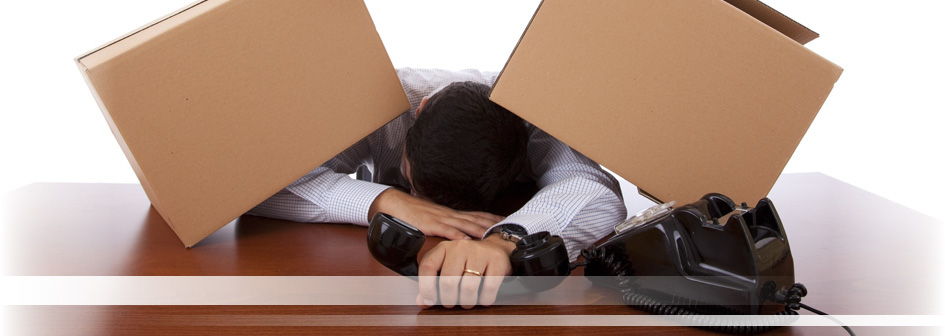Why a DIY Approach to Piano Moving Could Be a Costly Mistake
Posted on 24/06/2025
Why a DIY Approach to Piano Moving Could Be a Costly Mistake
Moving a piano is no ordinary task. Pianos are beautiful, expensive instruments, but they're also heavy, awkward, and delicate. As tempting as it might be to save a few dollars by attempting a DIY piano move, the risks and costs are far greater than most people anticipate. If you're contemplating handling the job alone, it's worth understanding why a DIY approach to piano moving could be a costly mistake.
Understanding the Complexity of Piano Moving
Pianos aren't simply pieces of furniture--they're intricate instruments with thousands of delicate moving parts. Moving a piano involves more than a few strong backs and a dolly. The process requires an understanding of piano mechanics, specific transport techniques, and the ability to navigate staircases, tight corners, uneven terrain, and sometimes multiple flights of stairs.
Types of Pianos and Their Weights
- Upright Pianos: These range from about 300 to 800 pounds.
- Grand Pianos: Grand pianos can tip the scales at 500 to over 1,300 pounds, depending on their size and make.
- Baby Grands: Slightly smaller, typically weighing 500 to 600 pounds.
- Console & Spinet Pianos: Although smaller, these still weigh 300 pounds or more.
Given their substantial weight and unwieldy shape, moving any kind of piano without specialized knowledge and equipment is inherently risky.

Top Risks of DIY Piano Moving
It's important to look beyond just the financial "savings" of a do-it-yourself move. Below are the most common--and costly--risks when attempting to move a piano yourself:
1. Personal Injury Hazards
- Back injuries, muscle strains, and even broken bones are common among untrained movers.
- Pianos are top-heavy and can easily tip, causing severe injury if mishandled.
- Improper lifting techniques put multiple people at risk during the move.
2. Piano Damage
- Delicate internal components--like hammers, strings, and pedals--can be thrown out of alignment or broken.
- Surface scratches, veneer chips, and dents are likely if the instrument isn't properly protected.
- Permanent tuning instability can result from sudden movements, bumps, or drops.
3. Property Damage
- Floors, walls, stairs, and doors can be scratched, dented, or destroyed if the piano collides with them.
- Damage to handrails, banisters, and entryways is common in tight spaces.
- Homeowners may face costly repair bills, especially for hardwood floors or historic trims.
4. Transportation Mishaps
- Pianos require specialized dollies, pads, and straps to prevent shifting during transit.
- Unsecured or poorly loaded instruments can tip over in a moving truck, resulting in catastrophic damage.
- Lack of climate control during transport can warp wooden components and loosen glue joints.
The Hidden Costs of DIY Piano Moving
Why is a do-it-yourself approach more expensive than it seems? It's easy to overestimate your abilities and underestimate the true costs and effort involved in moving a piano. Let's break down the true expenses.
1. Equipment Rental
- To move a piano safely, you need moving blankets, special dollies, piano boards, straps, and at least a ramp-equipped truck.
- Renting this equipment can cost $100 to $300 or more.
- If you don't rent the right equipment, your risk--and potential cost--skyrockets.
2. Potential Medical Bills
- Injury to yourself or helpers can lead to expensive emergency care, missed work, and ongoing physical therapy.
- Healthcare costs can quickly eclipse any perceived moving savings.
3. Repair and Replacement
- Repairs to a damaged piano can run from hundreds to thousands of dollars.
- Cosmetic or functional damage may be irreversible, especially for vintage or grand pianos.
- Repairing your home's floors or walls adds even greater expense.
4. Loss of Insurance Protection
- Professional movers are insured and bonded--your homeowner's policy may not cover damage incurred during a DIY move.
- If you damage someone else's property (a rental, an apartment, or a friend's home), you could be liable for all repairs out-of-pocket.
5. The Value of Your Time
- A DIY piano move is rarely quick and easy.
- The hours spent renting equipment, recruiting helpers, prepping, moving, and cleaning up could be better spent elsewhere.
- Moving stress can take an emotional toll as well.
Why Professional Piano Movers Are Worth the Investment
Given the significant risks, most experts advise hiring specialized piano movers. Here's why:
Experienced Handling and Training
- Piano moving companies provide their staff with extensive training on techniques for protecting both the instrument and your property.
- Movers understand how to disassemble, reassemble, and maneuver different types of pianos.
Specialized Equipment
- Professional moving teams come equipped with everything needed, from heavy-duty dollies to custom-sized moving boards.
- Proper equipment significantly minimizes the chance of accidents and damage.
Insurance Coverage
- Liability insurance and valuation coverage protect your instrument and property from accidental damage.
- No DIY move offers the same level of assurance.
Efficient and Hassle-Free
- Professional movers complete the job efficiently, often in a fraction of the time an amateur team might require.
- You get peace of mind knowing your investment is safe.
Common Myths About Moving a Piano Yourself
Many well-meaning DIYers underestimate the risks, often due to common misconceptions:
- "It's just heavy, not fragile." In reality, pianos are both heavy and incredibly delicate.
- "Friends can help me lift it." Most friends and family lack both experience and insurance for such tasks.
- "We can use regular moving equipment." Standard dollies and straps don't safely accommodate the unique shape and weight distribution of pianos.
Separating Fact from Fiction
- Professional movers don't just lift; they strategize.
- They assess tricky doorways, tight turns, and staircases before beginning.
- Special techniques are used to keep both the piano and the home intact.
How to Choose a Reliable Piano Moving Company
If you're convinced that hiring piano movers is the safest, smartest option, here's what to look for in a reputable company:
- Experience: Choose movers with a proven track record and positive reviews specifically for piano moving.
- Insurance: Ask to see proof of liability and valuation coverage.
- Equipment: Confirm they use proper piano skids, padding, and vehicles.
- Transparent Quotes: Get a detailed estimate for services.
- References: Check client references and online ratings.
Investing in professional piano movers protects not only your financial investment, but also your personal wellbeing and cherished instrument.

Conclusion: A DIY Approach to Piano Moving is a Gamble Not Worth Taking
Why is moving a piano yourself a costly mistake? The answer is clear: attempting to save a small sum now could result in significant, irreversible losses. When you consider the potential for personal injury, extensive property and instrument damage, hidden moving expenses, and lack of insurance, the true cost of a DIY piano move far outweighs the perceived savings.
If you value your piano and your safety, entrust your move to dedicated professionals who specialize in moving these beautiful, complicated instruments. Your piano--and your home--will thank you.
Frequently Asked Questions About Piano Moving
- Can't two or three strong people move a piano safely?
While physical strength helps, technique, knowledge, and proper tools are crucial. Most injuries and damages happen due to inexperience, not lack of muscle. -
What if I only have a small upright piano?
Even small pianos are heavy and delicate. The risks for instrument and property damage are still high without proper training. -
How much does professional piano moving cost?
Costs usually range from $200 to $1,000 or more, depending on size, type, distance, and environment (stairs, narrow hallways). -
Is moving a piano really that dangerous?
Yes. Both the piano's weight and its awkward shape make it dangerous for untrained movers--and potentially ruinous to attempt yourself.
Don't let your DIY spirit turn into a disaster. When it comes to piano moving, professional expertise is always the best investment.








